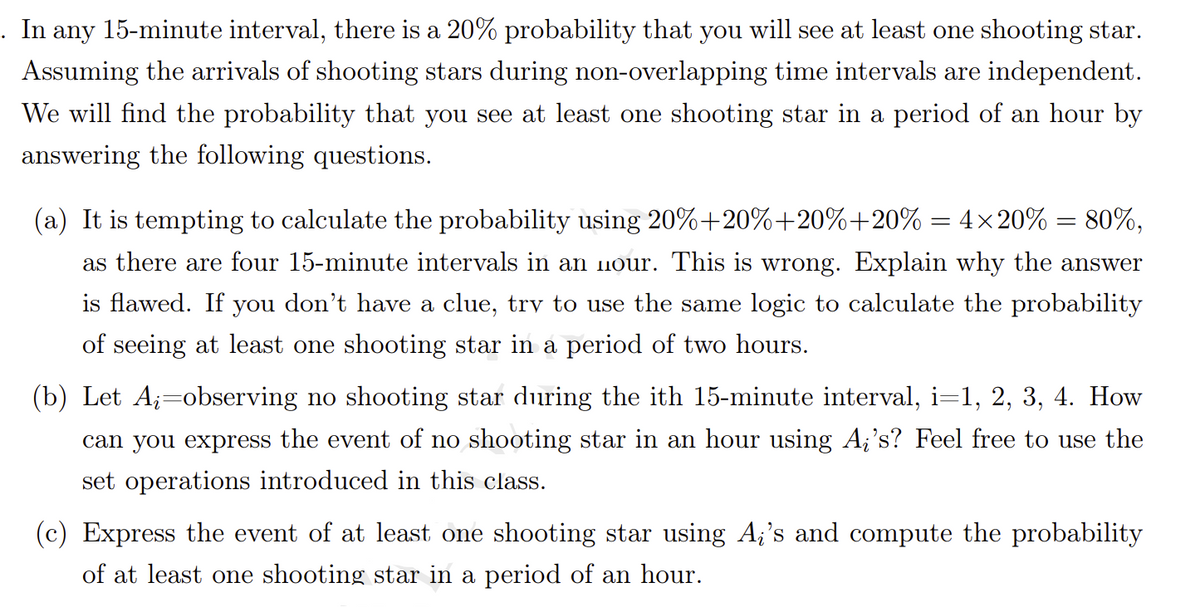In any 15-minute interval, there is a 20% probability that you will see at least one shooting star. Assuming the arrivals of shooting stars during non-overlapping time intervals are independent. We will find the probability that you see at least one shooting star in a period of an hour by answering the following questions.
In any 15-minute interval, there is a 20% probability that you will see at least one shooting star. Assuming the arrivals of shooting stars during non-overlapping time intervals are independent. We will find the probability that you see at least one shooting star in a period of an hour by answering the following questions.
Holt Mcdougal Larson Pre-algebra: Student Edition 2012
1st Edition
ISBN:9780547587776
Author:HOLT MCDOUGAL
Publisher:HOLT MCDOUGAL
Chapter11: Data Analysis And Probability
Section11.8: Probabilities Of Disjoint And Overlapping Events
Problem 2C
Related questions
Question

Transcribed Image Text:. In any 15-minute interval, there is a 20% probability that you will see at least one shooting star.
Assuming the arrivals of shooting stars during non-overlapping time intervals are independent.
We will find the probability that you see at least one shooting star in a period of an hour by
answering the following questions.
(a) It is tempting to calculate the probability using 20%+20%+20%+20% = 4×20% = 80%,
as there are four 15-minute intervals in an 1nour. This is wrong. Explain why the answer
is flawed. If you don't have a clue, trv to use the same logic to calculate the probability
of seeing at least one shooting star in a period of two hours.
(b) Let A;=observing no shooting star during the ith 15-minute interval, i=1, 2, 3, 4. How
can you express the event of no shooting star in an hour using A¡'s? Feel free to use the
set operations introduced in this class.
(c) Express the event of at least one shooting star using A;'s and compute the probability
of at least one shooting star in a period of an hour.
Expert Solution
This question has been solved!
Explore an expertly crafted, step-by-step solution for a thorough understanding of key concepts.
This is a popular solution!
Trending now
This is a popular solution!
Step by step
Solved in 3 steps

Recommended textbooks for you

Holt Mcdougal Larson Pre-algebra: Student Edition…
Algebra
ISBN:
9780547587776
Author:
HOLT MCDOUGAL
Publisher:
HOLT MCDOUGAL

College Algebra
Algebra
ISBN:
9781305115545
Author:
James Stewart, Lothar Redlin, Saleem Watson
Publisher:
Cengage Learning

Holt Mcdougal Larson Pre-algebra: Student Edition…
Algebra
ISBN:
9780547587776
Author:
HOLT MCDOUGAL
Publisher:
HOLT MCDOUGAL

College Algebra
Algebra
ISBN:
9781305115545
Author:
James Stewart, Lothar Redlin, Saleem Watson
Publisher:
Cengage Learning